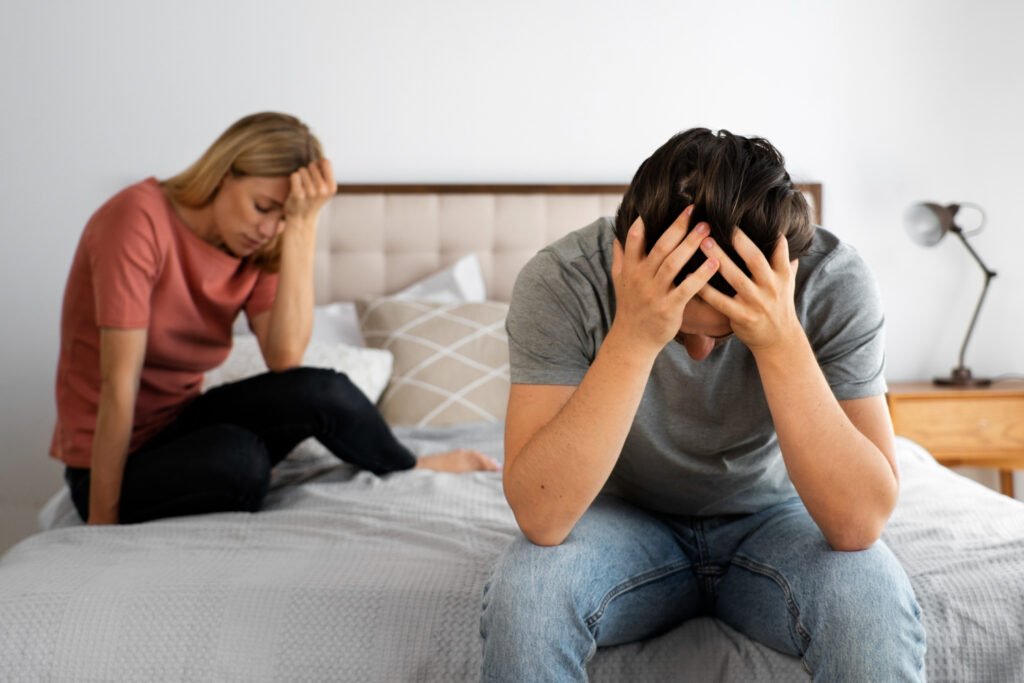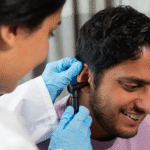If you’re curious about testosterone replacement therapy (TRT), you’re probably wondering what changes it can bring. The “before and after” stories can feel like a rollercoaster—some guys rave about feeling like a new person, while others notice smaller shifts. TRT is a medical treatment to boost low testosterone levels, often for men dealing with fatigue, low energy, or other symptoms. In this article, I’ll walk you through what life looks like before and after TRT, covering the physical, mental, and lifestyle changes you might see. I’ll also touch on risks and how to approach it safely. Whether you’re thinking about starting or just want to know more, you’ll get a clear picture of what TRT can do. Let’s dive into the details!
What Is TRT and Why Do People Use It?
Testosterone replacement therapy is a treatment that raises testosterone levels in men whose bodies don’t make enough naturally. Low testosterone, or “low T,” can happen due to aging, health issues, or injury. Symptoms like tiredness, low sex drive, and muscle loss often push guys to consider TRT. Doctors prescribe it through injections, gels, patches, or pellets to help restore balance. People use TRT to feel more energetic, improve mood, and regain strength. It’s not a magic fix, but for many, it makes a big difference in daily life. Before starting, you’ll need blood tests and a doctor’s guidance to make sure it’s right for you. Understanding why people turn to TRT helps set expectations for the changes you might see.
Before TRT: What Low Testosterone Feels Like
Before starting TRT, life with low testosterone can feel like you’re stuck in slow motion. Many guys report feeling wiped out, even after a full night’s sleep. You might struggle to focus, feel cranky, or lose interest in things you used to love. Low sex drive and trouble with erections are common, which can hit your confidence hard. Physically, you might notice less muscle, more body fat, or weaker bones. Some men even deal with hot flashes or thinning hair. These symptoms creep up over time, so you might not realize how much they’re dragging you down until you look back. Getting a blood test to confirm low T is the first step to figuring out if TRT could help turn things around.
Common Symptoms of Low Testosterone
Low testosterone shows up in ways that can mess with your daily life. Fatigue is a big one—you might feel like you’re running on empty no matter how much you rest. Mood swings, irritability, or even feeling down can make relationships tougher. A drop in sex drive or trouble performing in bed is another red flag. You might also notice you’re gaining fat, especially around the belly, while your muscles seem to shrink even if you work out. Some guys deal with brain fog, making it hard to concentrate. These symptoms vary from person to person, but if they sound familiar, a doctor can check your testosterone levels to see if TRT is worth exploring.
How Low T Affects Daily Life
Living with low testosterone can throw off your routine. You might skip the gym because you’re too tired or lack the strength you used to have. Work can feel harder when you’re foggy or unmotivated. Relationships might take a hit if you’re moody or not feeling romantic. Even small things, like getting out of bed, can feel like a chore. Some guys say they lose their edge—like they’re not as driven or confident as before. These changes can sneak up slowly, making it hard to pinpoint low T as the cause. Talking to a doctor and tracking your symptoms can help you see how much low testosterone is holding you back.
After TRT: What Changes Can You Expect?
Once you start TRT, the “after” phase can bring noticeable shifts, but it’s not instant. Most guys feel changes within weeks, though full effects can take 3-6 months. Energy often comes back, making you feel more awake and ready to tackle the day. Muscle mass and strength can improve, especially if you hit the gym. Mood swings might level out, leaving you happier and less irritable. Sex drive and performance often get a boost, which can improve relationships. Body fat might drop, and some guys notice thicker hair or stronger bones. Results vary based on your dose, lifestyle, and how low your T was to start. Regular check-ins with your doctor keep things on track and safe.
Physical Changes from TRT
TRT can reshape your body over time. Many guys gain muscle and strength, especially with exercise, because testosterone helps build lean mass. Body fat, particularly around the midsection, often decreases, giving you a leaner look. Bone density can improve, reducing the risk of fractures. Some notice their hair grows thicker or stops thinning, though this isn’t guaranteed. Skin might feel firmer, and you could have more stamina for workouts or daily tasks. These changes usually start within a month but peak after a few months. Eating well and staying active can make these physical improvements even more noticeable. Always follow your doctor’s plan to avoid overdoing it.
Mental and Emotional Benefits
TRT doesn’t just help your body—it can lift your mind too. Many guys feel sharper, with better focus and less brain fog. Mood swings often settle, making you less snappy or down. Anxiety or sadness might ease, helping you feel more like yourself. Confidence can climb, especially if you’re feeling stronger and more energetic. Some say they get their “zest for life” back, enjoying hobbies or socializing more. These mental boosts can start in a few weeks but grow over time. If you’re still struggling emotionally after a few months, talk to your doctor—they might tweak your dose or suggest other support.
Risks and Side Effects of TRT
TRT isn’t all smooth sailing—it comes with risks. Common side effects include acne, oily skin, or hair loss in some cases. Sleep apnea can worsen, and some guys notice swelling in their legs. More serious risks include higher red blood cell counts, which can thicken blood and raise heart risks. There’s also a chance of prostate issues or lower sperm count, affecting fertility. Mood swings or aggression can happen if doses are too high. Regular blood tests and doctor visits help catch problems early. TRT isn’t for everyone, especially if you have heart disease or prostate cancer. Knowing the downsides helps you weigh if the “after” is worth it for you.
Short-Term Side Effects
Starting TRT can bring some annoying side effects. Acne or oily skin might pop up as your hormones shift. Some guys feel bloated or notice swollen ankles from water retention. Sleep troubles, like snoring louder, can happen. You might feel moodier or more aggressive at first, especially if your dose needs adjusting. These effects often fade as your body gets used to the therapy, usually within a few weeks. Drinking water, eating healthy, and sticking to your prescribed dose can help. If side effects stick around or get worse, tell your doctor—they can tweak your treatment to keep you comfortable.
Long-Term Considerations
Over time, TRT can have bigger risks to watch for. High red blood cell counts can make your blood thicker, raising the chance of heart attack or stroke. Prostate growth is another concern, so regular screenings are a must. Fertility can take a hit, as TRT often lowers sperm production—if you want kids later, talk to your doctor about options like sperm banking. Some guys need to stay on TRT long-term, as stopping can bring back low T symptoms. Blood tests every few months keep these risks in check. Being honest with your doctor about your health history helps you stay safe while chasing those “after” benefits.
How to Start TRT Safely
Starting TRT the right way keeps you safe and sets you up for success. First, see a doctor—preferably a hormone specialist—who can run blood tests to confirm low T. Don’t self-diagnose or buy testosterone online; it’s risky and illegal without a prescription. Your doctor will pick the best method (injections, gels, etc.) based on your needs. Start with a low dose and monitor how you feel. Follow-up visits and blood work every 3-6 months track your levels and catch side effects. Lifestyle matters too—eating well, exercising, and sleeping enough boost TRT’s effects. Being patient and sticking to the plan helps you get the most out of the “after” without unnecessary risks.
Is TRT Worth It?
Deciding if TRT is worth it depends on your symptoms, goals, and willingness to manage risks. For guys with low T, the “after” can feel life-changing—more energy, better mood, and a stronger body. If fatigue or low drive is holding you back, TRT might be a game-changer. But it’s not a cure-all, and side effects like acne or heart risks need careful thought. Costs can add up too, with monthly expenses from $100 to $500 depending on insurance. If you’re okay with regular doctor visits and lifestyle tweaks, TRT could be a solid choice. Talk to your doctor, weigh the pros and cons, and decide if the “after” is worth leaving behind for good.
Final Thoughts
TRT can transform the “before and after” for men with low testosterone, bringing energy, strength, and confidence. From fighting fatigue to boosting mood and muscle, the changes can be impressive—but they take time and come with risks. Expect improvements in 3-6 months, but stay patient and work with a doctor to stay safe. Side effects like acne or heart concerns need monitoring, and lifestyle plays a big role in results. If low T’s dragging you down, TRT might be worth it. Get tested, ask questions, and take it step by step—you’ll know if the “after” is right for you!



